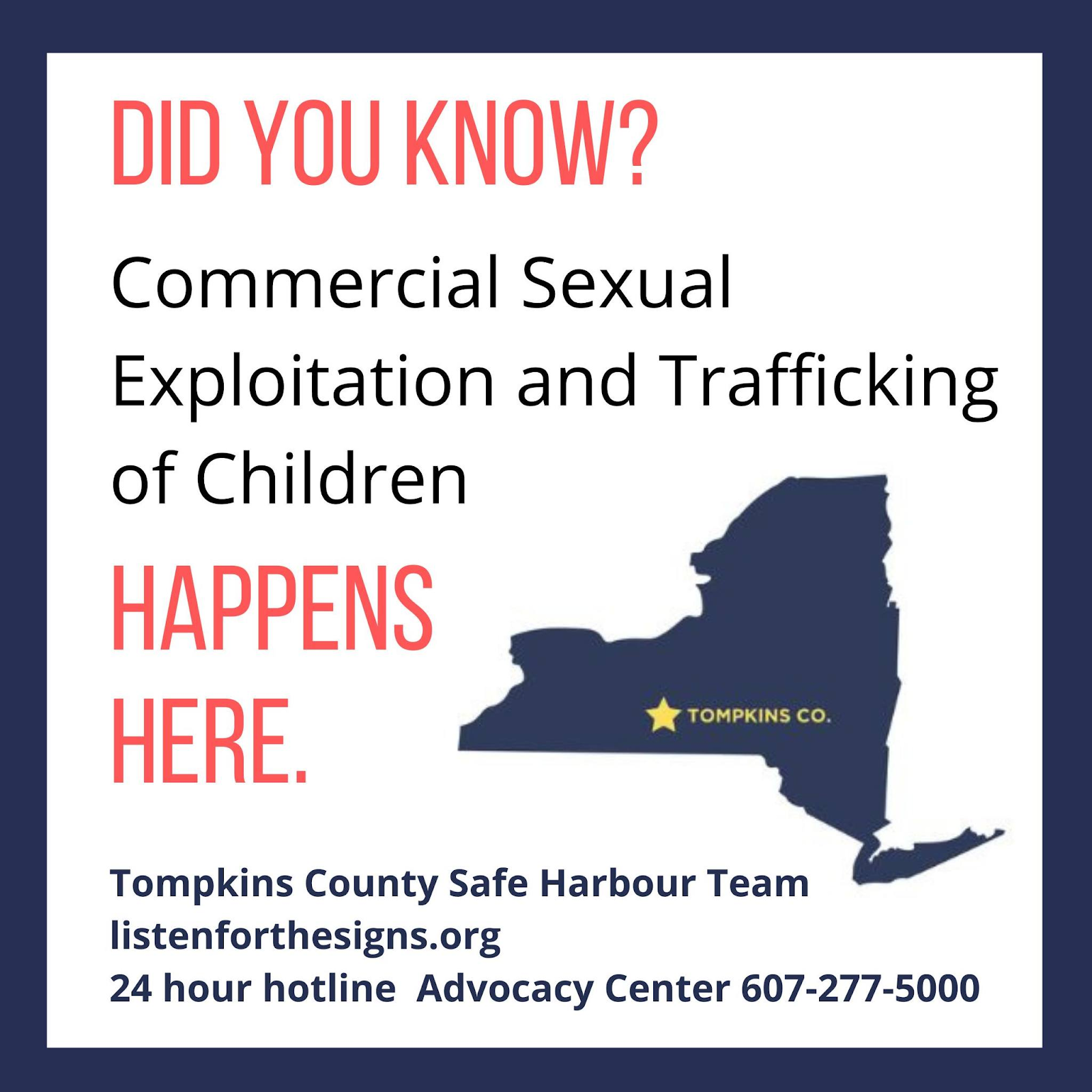There are youth in Tompkins County who have been sex trafficked or targeted for sexual exploitation. Does that surprise you? If it does, that is not surprising.
Many people have a narrow idea of what sex trafficking “looks like” – based on news articles or tv shows and movies – which can make it hard to notice signs of exploitation and trafficking among people we know and in our own communities. In addition, many of those stereotypes do not match the realities of sexual exploitation and trafficking in rural areas.
Despite the images we see most often in the media, there is no single “type” or “look” that identifies all victims of sex trafficking or exploitation. The majority of sex trafficking victims are young women and girls, but youth of all genders and gender expressions are targeted for sexual exploitation and trafficking, also known as commercial sexual exploitation of children (CSEC). In simple terms, this means a youth has been encouraged or coerced into trading a sexual act or image for something of value to them such as money, a place to stay, food, or material items.
Many youth who become victims of CSEC are initially contacted online and deliberately groomed and manipulated based on individual characteristics and circumstances. In December, the FBI issued a national public safety alert about a steep increase in teenage boys being targeted online and extorted for money after being tricked into sending sexually explicit pictures. This is sextortion which is a form of sexual exploitation and sex trafficking.
Since most youth develop relationships through apps and in online spaces, any youth can become a target, including youth surrounded by caring adults. Adults are encouraged to talk with youth about risks, “red flag” warning behaviors, and ways to seek help and share concerns about coercive online or in person behaviors.
While some exploiters deliberately lie about who they are, easily done in online spaces, sex exploiters can include people known to youth including family members, peers, mentors, romantic partners. Traffickers exploit emotional bonds, youth needs, past trauma, and any approach which gives them manipulative power over a youth. Traffickers are known to promise things the victim longs for. That could be job opportunities, emotional affection, or life necessities like food and place to live. They may also threaten to shame socially or harm the youth or those they care about physically.
According to data from the US National Human Trafficking Hotline, runaway and homeless youth are extremely vulnerable and have a high risk of being exploited and trafficked. About 40% of homeless youth identify as LGBTQ+ and not surprisingly they are a high risk group. Other youth who are at higher risk of being trafficked include those with disabilities, victims of trauma or abuse, children in foster care or the child welfare system, and immigrants, especially if they are undocumented.
Another important thing to remember is that teens and children may not see themselves as trafficked, exploited or sexually abused. And if they do, their experiences of broken trust may make it difficult to believe that anyone is trustworthy or truly concerned about their wellbeing.
Awareness and education can help protect youth from human trafficking. When people are aware that the problem can occur anywhere, they are able to help spot the signs, prevent it and stop it.
Learn more about Tompkins County CSEC services and prevention: listenforthesigns.org
Learn more about what teens and caregivers should know about sextortion and youth CSEC:
FBI sextortion information for youth and caregivers
Thorn.org
Love146If you suspect that a youth is in an emergency situation where the safety and welfare of the youth is in imminent jeopardy, contact 9-1-1 and report the situation.
If you have concerns about a child or teen, call the Advocacy Center’s 24/7 confidential hotline at (607) 277-5000.
